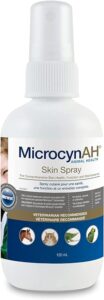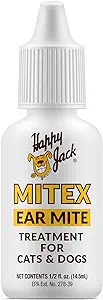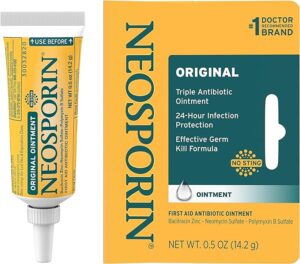Introduction
Scabs on a cat’s ear can be a sign of a more significant health problem. If left untreated, the scabs can worsen and lead to discomfort or pain. In this article, we will explore the causes, symptoms, and treatment options for this nasty problem.
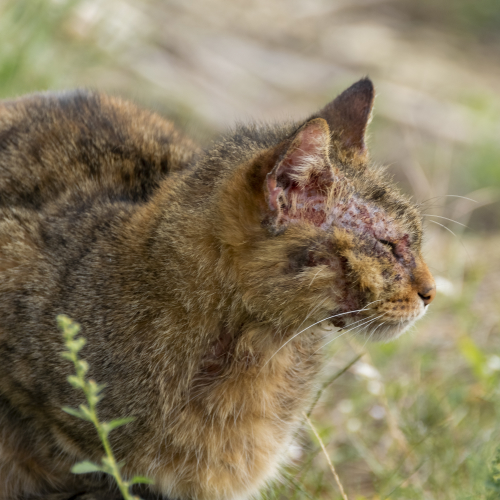
Causes of Scabs on a Cat's Ear
Scabs on a cat’s ear can occur due to several reasons, including allergies, infections, parasites, trauma, or other underlying health conditions.
Trauma, such as scratching or biting at the ear, can lead to scabs and open wounds. Other underlying health conditions such as autoimmune diseases or hormonal imbalances can also cause scabs. In case of an ear infection cats can also traumatise their own ears.
Infections of the skin on the ear such as bacterial or fungal infections can also cause scabs to form on a cat’s ear. Ear mites, which are small parasites that normally live in the ear canal, can also cause scabs and crusty skin to develop in and around the ear. Other kinds of mites are also capable of creating scabs on a cat’s ear.
Cancer is also a pretty common cause of scabs or crusts on the ears of a cat. At the edge of the ear there can be crusts and scabs that don’t heal. It looks a bit like there is a not healing wound. This type of cancer is called squamous cell carcinomas. The cancer is “eating” the ear off and leaving scabs and crusts behind. This cancer is only seen in older cats.
Allergies can cause scabs to develop on a cat’s ear. A cat may be allergic to food, flea bites, or other environmental factors such as pollen, mold, or dustmites. Most of the time the cat has more places on his body that itch or has skinissues if there is an allergy.
Symptoms of Scabs on a Cat's Ear
The most common symptoms include itching, redness, swelling, and hair loss around the affected area. The cat may also shake its head or tilt it to one side to relieve discomfort. If ear mites are the cause of the problem, you can also see a dark brown ear wax inside the ear canal.
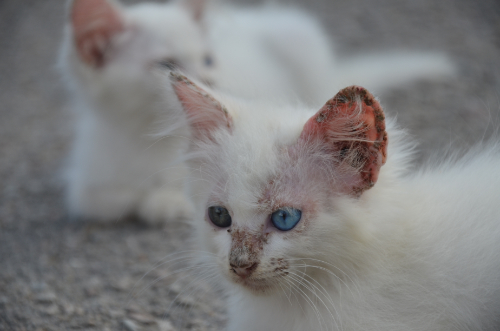
Home remedies to treat scabs on a cat's ear
The remedies to treat scabs on a cat’s ear vary with the underlying cause.
Trauma
If there was a trauma seen on the ear you can treat the ear with a skin healing product like MicrocynAH wound and skin care. Put this on the ears for 3 times a day. Within 7 day’s the ears should have healed.
Mites
Ear mites can be treated with Happy Jacks mitex. Put once a day some ointment in the earcanal and also on the back of the ear where the scabs are. Use for 7 days, then stop for 7 days. After this period you use it again for 7 days.
Other kinds of mites, including ear mites can be treated with Mange Relief for Cats.
Bacterial infection
If there is an infection of the skin on the ear that is causing the scabs to form you can best use Neosporin antibiotic ointment. Use it once a day for 5-7 days. By then the skin of your cat’s ear should look much better. If not, go to see a veterinarian.
Allergies
Allergies can cause all kinds of itchy scabs on the body of your cat. But the ears and around the ears are the most common places. You can find out what is causing the allergy in you cat using the following product. If possible you should eliminate the cause from your cat’s life.
If the allergy is minor and not causing much discomfort for your cat, you can also threat the skin on the outside of the ears with cream containing corticosteroids. For instance hydrocortisone 1% cream. The hydrocortisone will suppress the immune system’s allergic response. Start using this cream twice a day. After a week you need to start giving it once a day for 7 days. After that period you will give it once every two days. If possible make the time between as long as possible.
What if the scabs on a cat's ear don't heal?
In that case veterinary treatment is often required to treat the cat’s ear. A veterinarian will examine the cat and determine the underlying cause of the scabs. Treatment may include medications such as antibiotics, antifungal agents, or anti-parasitic drugs.
Preventing Scabs on a Cat's Ear
Regular grooming and hygiene can help prevent scabs on a cat’s ear. Keep the cat’s ears clean and dry, and regularly check for signs of infection or parasites. Managing allergies or other underlying health conditions can also help prevent scabs from forming. Giving salmon oil to your cat will also help to improve the skin-resistance. The skin will become stronger and is much less irritated by bacteria, fungi or parasites.
Conclusion
Scabs on a cat’s ear can be an annoying problem. Most of the time it is not a dangerous problem. Bacterial, fungal or parasite infections can be the cause. Regular grooming and hygiene can help prevent scabs from forming, and home remedies can help relieve symptoms and promote healing. However, it’s crucial to seek professional veterinary care if the scabs persist or worsen.
Remember, early detection and treatment can help prevent more severe health issues from developing. By working with your veterinarian and practicing good hygiene, you can help keep your cat healthy and comfortable.

